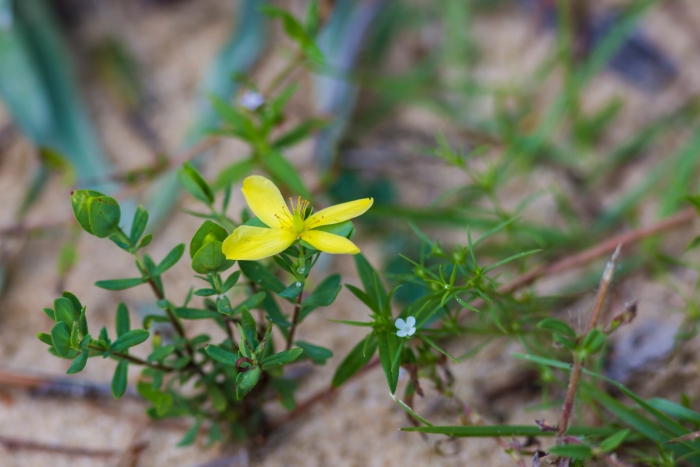St. Andrew’s Cross
(Hypericum hypericoides)
St. Andrew’s Cross (Hypericum hypericoides)
/
/

Melissa McMasters
CC BY 4.0
Image By:
Melissa McMasters
Recorded By:
Copyright:
CC BY 4.0
Copyright Notice:
Photo by: Melissa McMasters | License Type: CC BY 4.0 | License URL: http://creativecommons.org/licenses/by/4.0/ | Rights Holder: Melissa McMasters | Publisher: iNaturalist | Date Created: 2018-09-22T10:47:12-07:00 |





















































Estimated Native Range
Summary
Hypericum hypericoides, commonly known as St. Andrew’s Cross, is a deciduous shrub or subshrub native to pine flatwoods, coastal plains, and sandy woodlands in the Southeastern United States, the Caribbean and Central America. It typically grows to a height of 0.5-1 feet (0.2-0.3 meters) and a width of 1-3 feet (0.3-0.9 meters). The plant has a bushy form with opposite, narrow leaves and distinctive, four-petaled yellow flowers that bloom in the spring and summer, providing a modest yet attractive display. The flowers are followed by small, inconspicuous fruits.
St. Andrew’s Cross is valued for its drought tolerance and ability to thrive in poor, sandy soils, making it an excellent choice for xeriscaping and naturalistic plantings. It is also used in restoration projects and as a low-maintenance ground cover in sunny areas. This plant is relatively pest and disease-free but can suffer from root rot if overwatered. It prefers full sun but can tolerate light shade and requires well-drained soil.CC BY-SA 4.0
St. Andrew’s Cross is valued for its drought tolerance and ability to thrive in poor, sandy soils, making it an excellent choice for xeriscaping and naturalistic plantings. It is also used in restoration projects and as a low-maintenance ground cover in sunny areas. This plant is relatively pest and disease-free but can suffer from root rot if overwatered. It prefers full sun but can tolerate light shade and requires well-drained soil.CC BY-SA 4.0
Plant Description
- Plant Type: Shrub, Subshrub
- Height: 0.5-1 feet
- Width: 1-3 feet
- Growth Rate: Moderate
- Flower Color: Yellow
- Flowering Season: Spring, Summer
- Leaf Retention: Evergreen
Growth Requirements
- Sun: Full Sun
- Water: Low, Medium
- Drainage: Slow, Medium
Common Uses
Bee Garden, Bird Garden, Butterfly Garden, Deer Resistant, Groundcover, Low Maintenance
Natural Habitat
native to pine flatwoods, coastal plains, and sandy woodlands in the Southeastern United States, the Caribbean and Central America
Other Names
Common Names:
Scientific Names: , Hypericum hypericoides, Hypericum hypericoides var. hypericoides, Ascyrum hypericoides var. typicum,
GBIF Accepted Name: Hypericum hypericoides (L.) Crantz